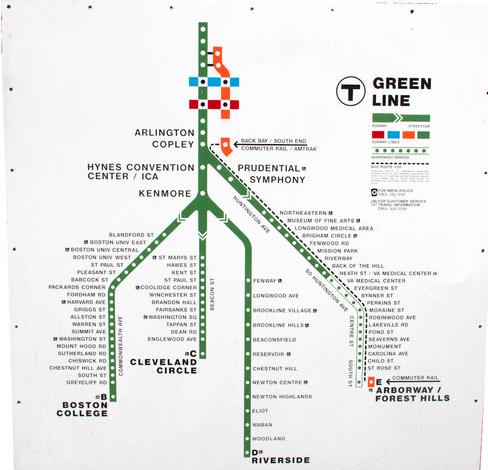W. K. Lis
Superstar
Maybe we should have a look at the Green Line in Boston, Massachusetts for comparison purposes. Keeping in mind that it is the oldest "subway" line in North America, opening in 1897. See link.
It includes underground subway stations.

and surface stops.

The big difference is that it includes branches that go in different directions. We transfer.

The Green Line is a light rail system run by the Massachusetts Bay Transportation Authority (MBTA) in the Boston, Massachusetts, metropolitan area. It is the oldest Boston subway line, and with tunnel sections dating from 1897, the oldest in America. It runs underground through downtown Boston, and on the surface on several radial boulevards and into inner suburbs. With an average daily weekday ridership of over 204,000 in 2017, it is the second most heavily used light rail system in the country.
The four branches are the remnants of a large streetcar system, which began in 1856 with the Cambridge Horse Railroad and was consolidated into the Boston Elevated Railway several decades later. The Tremont Street Subway – the oldest subway tunnel in North America – opened its first section on September 1, 1897, to take streetcars off overcrowded downtown streets; it was extended five times over the next five decades. The streetcar system peaked in size around 1930 and was gradually replaced with trackless trolleys and buses, with cuts as late as 1985. A new branch opened on a converted commuter rail line in 1959; the Green Line Extension project will add two new branches into Somerville and Medford in 2021.
It includes underground subway stations.

and surface stops.

The big difference is that it includes branches that go in different directions. We transfer.





